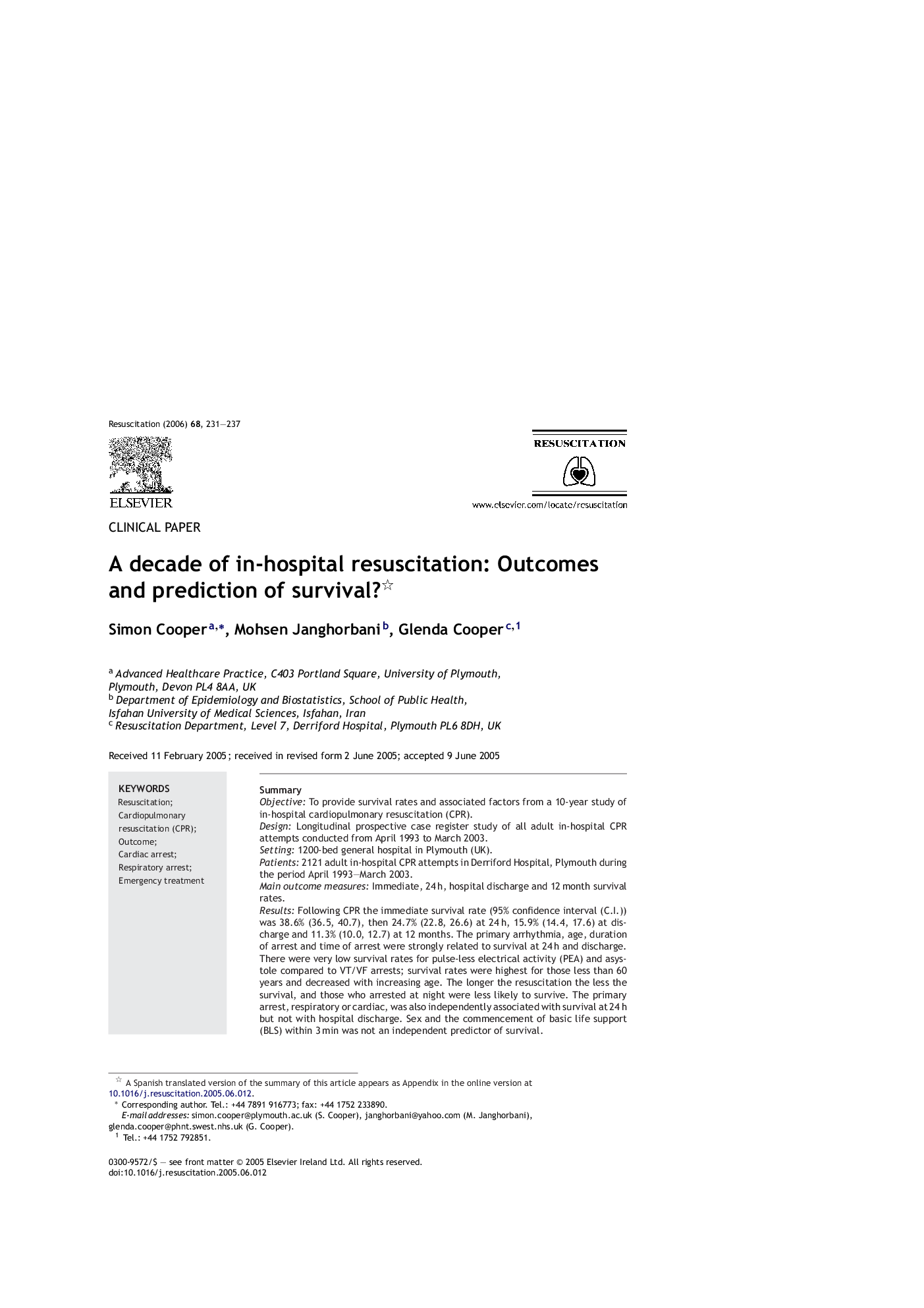| Article ID | Journal | Published Year | Pages | File Type |
|---|---|---|---|---|
| 3011568 | Resuscitation | 2006 | 7 Pages |
SummaryObjectiveTo provide survival rates and associated factors from a 10-year study of in-hospital cardiopulmonary resuscitation (CPR).DesignLongitudinal prospective case register study of all adult in-hospital CPR attempts conducted from April 1993 to March 2003.Setting1200-bed general hospital in Plymouth (UK).Patients2121 adult in-hospital CPR attempts in Derriford Hospital, Plymouth during the period April 1993–March 2003.Main outcome measuresImmediate, 24 h, hospital discharge and 12 month survival rates.ResultsFollowing CPR the immediate survival rate (95% confidence interval (C.I.)) was 38.6% (36.5, 40.7), then 24.7% (22.8, 26.6) at 24 h, 15.9% (14.4, 17.6) at discharge and 11.3% (10.0, 12.7) at 12 months. The primary arrhythmia, age, duration of arrest and time of arrest were strongly related to survival at 24 h and discharge. There were very low survival rates for pulse-less electrical activity (PEA) and asystole compared to VT/VF arrests; survival rates were highest for those less than 60 years and decreased with increasing age. The longer the resuscitation the less the survival, and those who arrested at night were less likely to survive. The primary arrest, respiratory or cardiac, was also independently associated with survival at 24 h but not with hospital discharge. Sex and the commencement of basic life support (BLS) within 3 min was not an independent predictor of survival.ConclusionThe findings of this study show resuscitation survival rates from a 10-year study and indicate some of the key predictors of survival.
